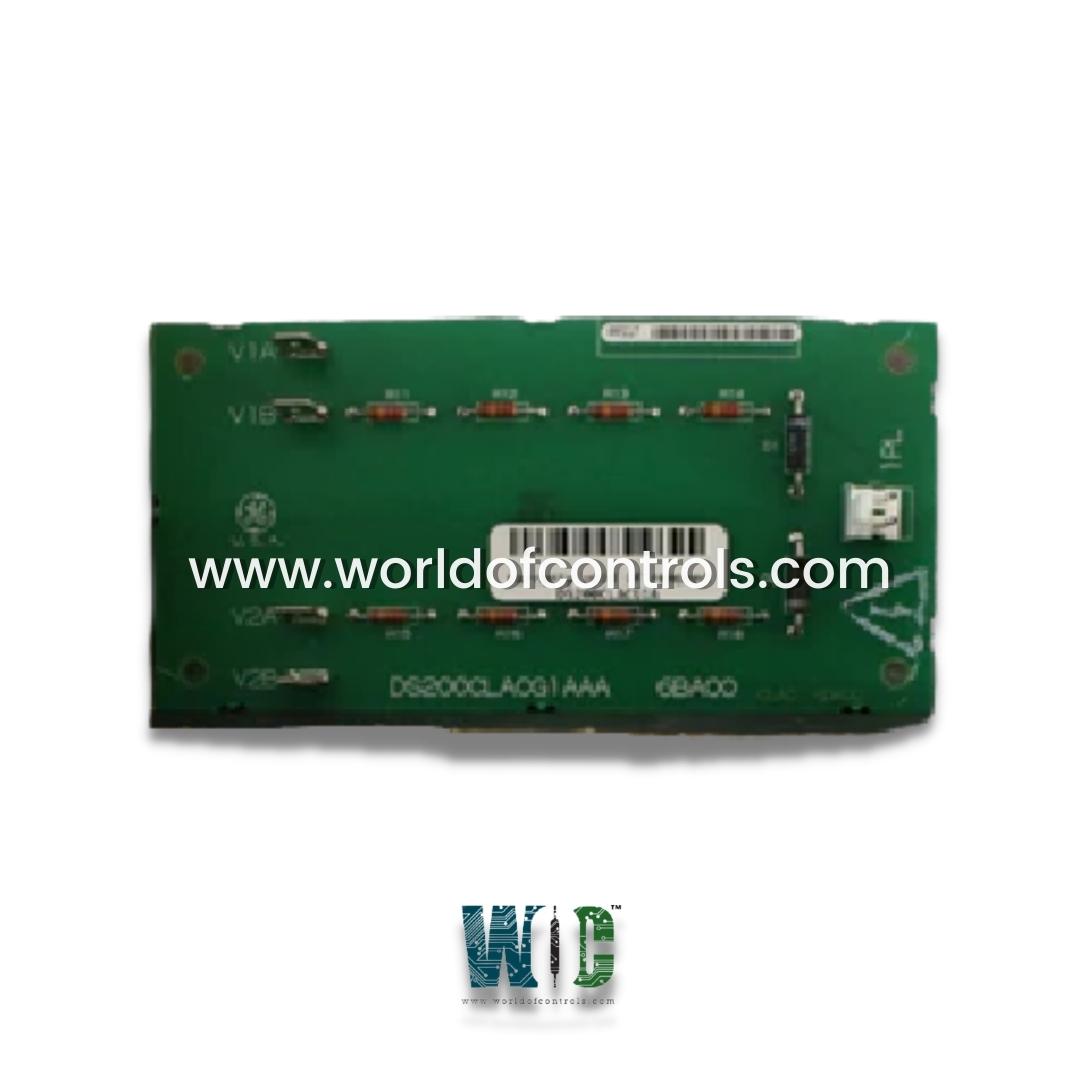
World Of Controls understands the criticality of your requirement and works towards reducing the lead time as much as possible.
DS200CLACG1A - Cell Lamp Attenuator Contactor Pilot Card is available in stock which ships the same day.
DS200CLACG1A - Cell Lamp Attenuator Contactor Pilot Card comes in UNUSED as well as REBUILT condition.
To avail our best deals for DS200CLACG1A - Cell Lamp Attenuator Contactor Pilot Card, contact us and we will get back to you within 24 hours.
SPECIFICATIONS:
Part Number: DS200CLACG1A
Manufacturer: General Electric
Series: Mark V
Product Function: Cell Lamp Attenuator Contactor Pilot Card
Power Requirements: +5 V dc, 6 A
Number of relay channels: 12
Trip Solenoid Rating: 125 V dc
Power supply voltage: 28 V dc
Voltage Range: 18 - 32 VDC
Mounting Option: DIN-rail mounting
Operating temperature: -30 to +65 degrees Celsius
Size: 15.9 cm high x 17.8 cm width
Repair: 3-7 Day
Availability: In Stock
Country of Manufacturer: United States (USA)
Manual: GEI-100760
FUNCTIONAL DESCRIPTION:
DS200CLACG1A is a Cell Lamp Attenuator Contactor Pilot Card manufactured and designed by General Electric as part of the Mark V Series used in GE Speedtronic Control Systems. These lamps serve as indicators for various compartments or sections within the turbine system. They illuminate to provide visual feedback on the status of specific cells or areas, allowing operators to monitor the turbine's operation effectively. The attenuator in a turbine control system is responsible for adjusting the strength or magnitude of signals within the system. It helps maintain signal integrity and prevents overpowering of sensitive components, ensuring proper communication and control throughout the system.
Contactors are essential switches used to control the flow of electricity to different parts of the turbine system. They manage high-power circuits, allowing for safe and efficient operation by enabling or interrupting the electrical supply to various components as needed. The pilot card, also known as a control card or interface card, acts as the intermediary between the turbine control software and the physical components of the system. It receives commands from the control software and translates them into signals that control actuators, sensors, contactors, and other devices, facilitating the precise control and monitoring of the turbine's operation.
FEATURES:
WOC has the largest stock of GE Speedtronic Control System Replacement Parts. We can also repair your faulty boards. WORLD OF CONTROLS can also supply unused and rebuilt backed-up with a warranty. Our team of experts is available round the clock to support your OEM needs. Our team of experts at WOC is happy to assist you with any of your automation requirements. For pricing and availability on any parts and repairs, kindly get in touch with our team by phone or email.
What is a cell lamp attenuator system?
A cell lamp attenuator system is a setup used to control the brightness or intensity of lamps, typically utilizing electronic attenuation techniques.
How does a cell lamp attenuator work?
The cell lamp attenuator system adjusts the power supplied to the lamps, thereby controlling their brightness. This adjustment is typically achieved using electronic components such as resistors, transistors, or integrated circuits.
What are the main components of a cell lamp attenuator system?
The main components typically include lamps (light sources), attenuators (for controlling light intensity), contactors (switches for power control), and pilot cards (control modules for monitoring and feedback).